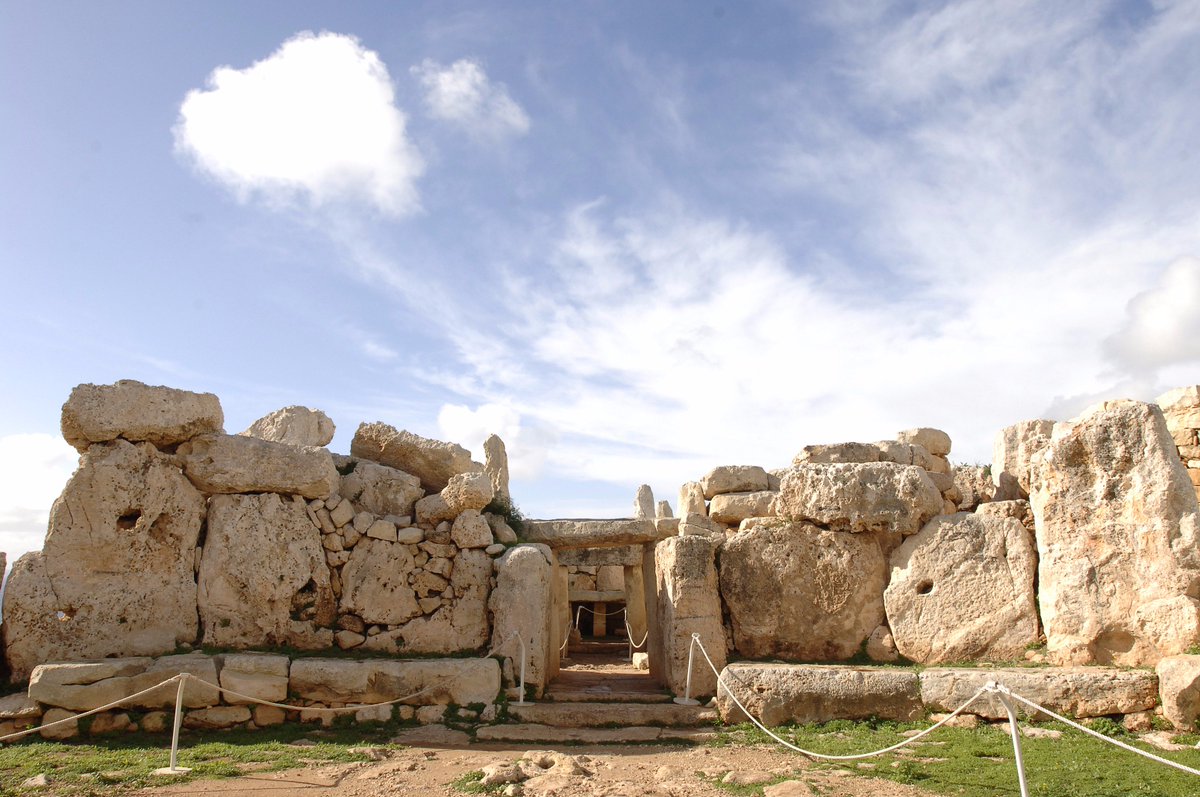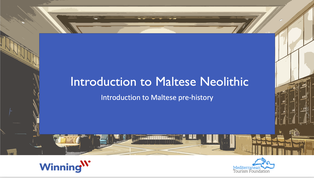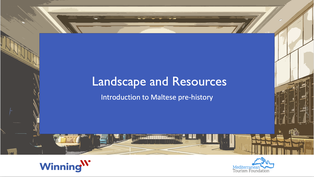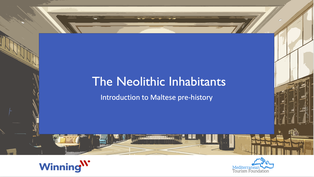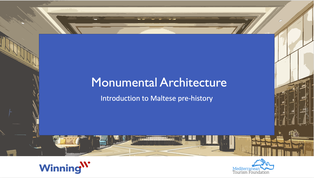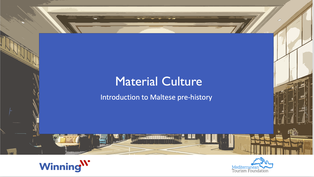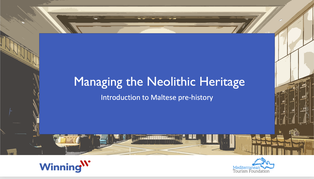Filters
Introduction to Maltese pre-history
Although Neolithic sites are among the most popular cultural attractions in the Maltese islands, they are still little understood. Recent discoveries have shed light on these sites and the people who inhabited the Maltese islands some 5000 years ago. In this course, participants will be given a general overview of the Maltese Neolithic, highlighting aspects of life ranging from personal needs to communal monumental architecture. The course will conclude with an overview of management practices that help ensure the preservation of these sites for future generations.
AIMS:
provide a general overview of the Maltese Neolithic
provide interpretations derived from the latest archaeological research
provide an insight into management and conservation measures of archaeological sites - illustrate how knowledge about ancient populations can be derived from the archaeological record
introduce World Heritage Values
LEARNING OUTCOMES
learn which values make the Maltese Neolithic sites unique and of Outstanding Universal significance
learn which are the key Neolithic sites in the Maltese islands and their location
get a glimpse of the natural environment in the Neolithic
understand how sustainability of Neolithic communities depended on their ability to work with the natural resources
learn what information can be gained from human remains found in the archaeological record
get a glimpse of the people behind the creation of unique monumental architecture
get an indepth understanding of the different elements of Maltese megalithic architecture
understand the limitations of archaeological evidence
get an overview of material culture in the Neolithic, including pottery and statuary
gain an understanding of the main architectural alignments to celestial bodies
learn which elements affect the long-term preservation of heritage sites
learn how visitor behaviour can aid in the preservation of heritage sites
After the Course, you will be able to:
enjoy prehistoric sites while avoiding any irreversible impact
recommend which are the key Neolithic sites that can be visited in the Maltese islands - appreciate the Outstanding Universal Value of Maltese Neolithic sites
appreciate the genius of the Neolithic communities to create exceptional art and architecture despite having limited resources
recommend sites/museums to visit according to your clients’ interests

The mission of Heritage Malta is to ensure that those elements of cultural heritage entrusted to it are protected and made accessible to the public. The agency also operates a conservation division for the training of conservators and conservation scientists.
Heritage Malta is the national agency for museums, conservation practice and cultural heritage. Created by the Cultural Heritage Act which was enacted in 2002, the national agency replaced the former Museums Department.
Initially Heritage Malta was entrusted with the management of museums, sites and their collections. However in 2005, the agency’s responsibilities increased when it took over the former Malta Centre for Restoration to become the national agency responsible for conservation.
Heritage Malta seeks to provide its various audiences with an enhanced experience during visits to the various sites and museums. Cultural heritage can act as a catalyst for Malta’s tourism potential and consequently contribute significantly to the economy.
The agency has a specific educational section with special educational programmes targeting children of different age groups as part of organised school visits. These programmes are based on the local educational curriculum and address specific areas of study in an edutainment approach.
Heritage Malta is also committed to bring culture closer to the people through facilitating interpretation and accessibility, both physical and intellectual. Whether through temporary exhibitions, public lectures, heritage trails or other specialised events, the agency ensures that it lives up to the motto of ensuring a future to our past.

Katya Stroud studied archaeology at the University of Malta graduating with a Masters degree in 2004. Her studies focused on the history of conservation and management of archaeological sites, particularly the Maltese Megalithic Temples.
Between 2000 and 2004 she worked as a freelance archaeologist as part of Archaeology Services Co-operative Ltd. participating in rescue excavations, environmental impact assessments and the design of various projects for archaeological sites in collaboration with both private and public entities.
She has been employed with Heritage Malta since 2004 and is currently Senior Curator of the Prehistoric Sites Department. She is particularly interested in the study of the history of conservation and management of archaeological sites as well as popular interpretations and changing perceptions of archaeological sites.
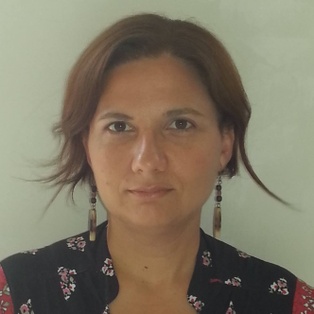
Maria Elena Zammit is Principal Curator, Prehistoric Sites (Heritage Malta) with curatorial responsibility for the Ħal Saflieni Hypogeum, Ta' Ħaġrat and Skorba. She plays an active role in the management of World Heritage properties with tasks ranging from developing interpretation facilities to drafting and implementing management plans, lecturing, and studying and mitigating impacts to archaeological sites and their context.
She studied archaeology at the University of Malta and conducted an archaeological survey of Il-Qlejgħa tal-Baħrija Bronze Age Site as part of her Masters degree. Research interests include excavation methodology, site-formation processes, Maltese prehistory, the Maltese prehistoric ceramic sequence, world heritage and cultural heritage management.



